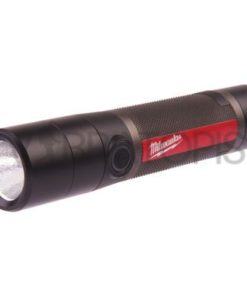UV Flashlight – F5
$13.00
A UV flashlight, also known as a blacklight, is a compact and powerful tool that emits ultraviolet light.
A UV flashlight, also known as a blacklight, is a compact and powerful tool that emits ultraviolet light. This type of light is invisible to the human eye but can cause certain materials to fluoresce, making them visible. UV flashlights are used in a wide range of applications, from forensic investigations to everyday household tasks. Here’s an in-depth look at what makes UV flashlights so useful and how they can be applied in different scenarios.

Key Features of UV Flashlights
- Wavelength: UV flashlights typically emit light at a wavelength of around 365 nanometers (nm), which is ideal for causing fluorescence in many materials1. This wavelength is crucial for detecting substances that are otherwise invisible under normal lighting conditions.
- LED Technology: Most modern UV flashlights use LED bulbs, which are energy-efficient and have a long lifespan1. LEDs also provide a consistent and powerful beam of UV light.
- Portability: These flashlights are designed to be compact and lightweight, making them easy to carry and use in various settings2.
- Durability: Many UV flashlights are built to withstand rough handling and harsh environments, often featuring water-resistant and shockproof designs2.
Applications of UV Flashlights
- Forensic Investigations: UV flashlights are invaluable in forensic science. They can reveal blood, bodily fluids, and other substances that are not visible to the naked eye1. This makes them essential tools for crime scene investigations.
- Counterfeit Detection: UV light can be used to verify the authenticity of banknotes, passports, and other important documents. Many of these items have security features that fluoresce under UV light1.
- Mineral and Gemstone Inspection: Certain minerals and gemstones fluoresce under UV light, making UV flashlights useful for geologists and gemologists1.
- Pest Control: UV flashlights can help detect the presence of pests such as bedbugs and scorpions, which fluoresce under UV light1.
- Household Use: These flashlights are handy for finding pet stains, checking for cleanliness, and even curing certain adhesives and resins2.

Popular Models of UV Flashlights
- Lepro LE UV Torch: This model features 9 LED bulbs and emits light at 395 nm, making it suitable for detecting pet urine, stains, and bed bugs2. It is compact and comes with 3 AAA batteries included.
- Vansky UV Torch: Equipped with 21 LEDs, this flashlight is designed for pet urine detection and other household uses2. It is durable and comes with batteries included.
- DARKBEAM UV Flashlight: This rechargeable flashlight emits light at 395 nm and is ideal for detecting pet stains, curing resins, and other applications2. It is portable and easy to use.
Choosing the Right UV Flashlight
When selecting a UV flashlight, consider the following factors:
- Wavelength: Ensure the flashlight emits light at the correct wavelength for your intended use. For most applications, a wavelength of around 365 nm is ideal1.
- Power Source: Decide whether you prefer a flashlight that uses disposable batteries or a rechargeable model2.
- Durability: Look for features such as water resistance and shockproof construction if you plan to use the flashlight in harsh environments2.
In conclusion, UV flashlights are versatile tools with a wide range of applications. Whether you need one for professional use or everyday tasks, understanding their features and capabilities will help you choose the right model for your needs.
Contact: Hoai Ngoc
Be the first to review “UV Flashlight – F5” Cancel reply
Related products
Compact Flashlights
Compact Flashlights
Compact Flashlights
Compact Flashlights
Compact Flashlights
Compact Flashlights
Compact Flashlights



















Reviews
There are no reviews yet.